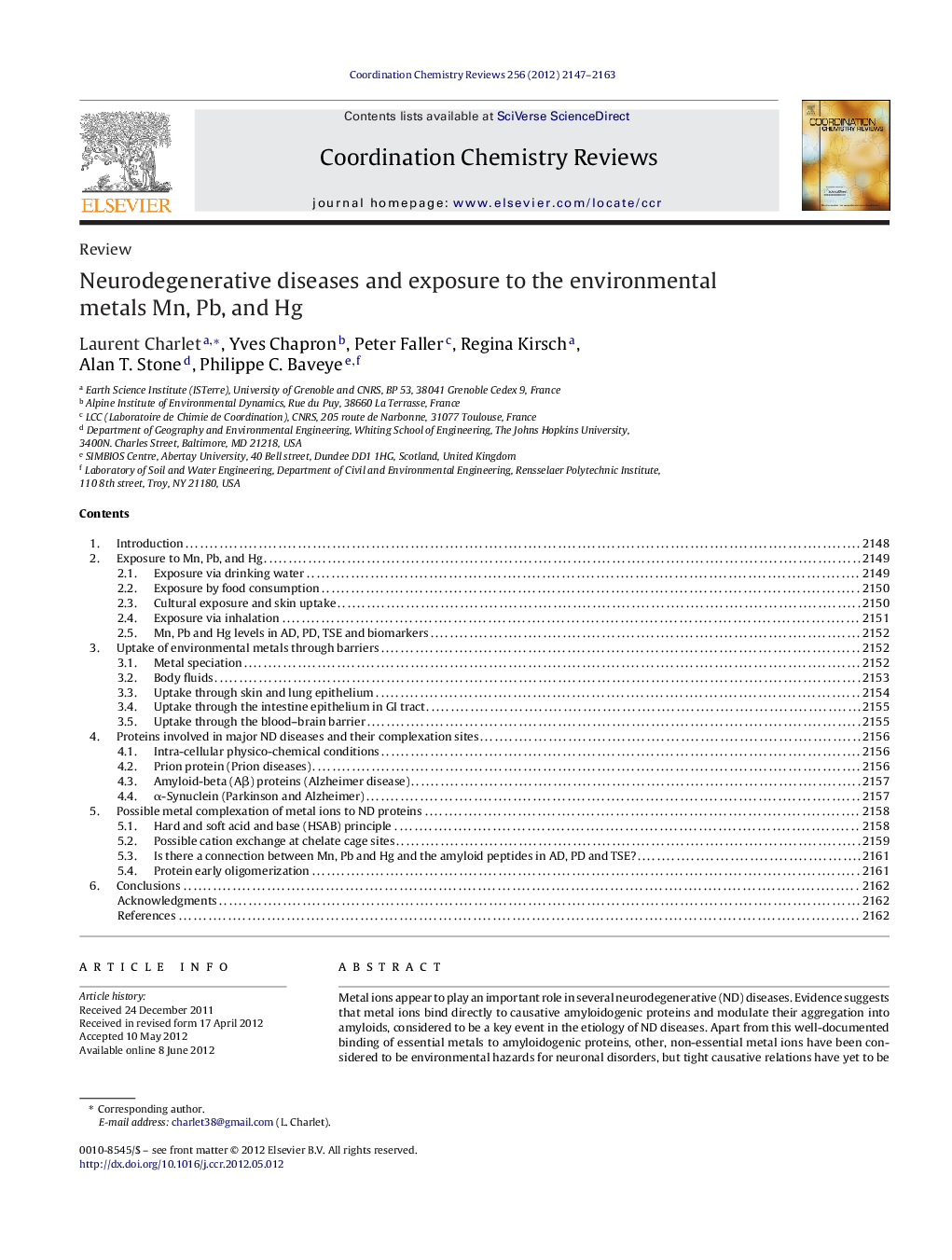| Article ID | Journal | Published Year | Pages | File Type |
|---|---|---|---|---|
| 1299690 | Coordination Chemistry Reviews | 2012 | 17 Pages |
Metal ions appear to play an important role in several neurodegenerative (ND) diseases. Evidence suggests that metal ions bind directly to causative amyloidogenic proteins and modulate their aggregation into amyloids, considered to be a key event in the etiology of ND diseases. Apart from this well-documented binding of essential metals to amyloidogenic proteins, other, non-essential metal ions have been considered to be environmental hazards for neuronal disorders, but tight causative relations have yet to be established. The present article provides a review of the potential role of manganese, lead, and mercury as environmental risk factors in ND diseases, and covers in detail environmental availability of these metals, their uptake and distribution in the body and cells, and their role in Alzheimer's, Parkinson's and Prion diseases.
► The link between AD, PD and TSE neurodegenerative disease and metal exposure is reviewed. ► Transfer of Mn, Pb, and Hg specific species through barriers is discussed. ► Metal speciation is highlighted in terms of Eh and pH conditions within cell compartments. ► The structure of amyloidogenic Aβ, αS and PrP protein–Cu complexes is well established. ► A pathogenic transconformational PrP change upon Mn to Cu exchange is proposed.
